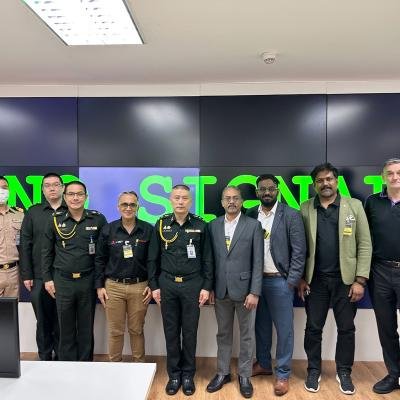That is, until a sweeping international law enforcement operation led by Europol cracked down on dozens of these criminal platforms.
It’s a win, yes—but it’s far from the end of this cyber battle.
The Crackdown: Operation PowerOFF
In April 2025, Europol, in coordination with the U.S., Dutch, German, and Polish authorities, launched a new phase of Operation PowerOFF—a global initiative targeting illegal DDoS-for-hire platforms.
What happened? Over 30 websites offering DDoS-for-hire services were taken offline, including:
- cfxapi.com
- neostress.net
- bootyou.net
- freestresser.to
- kraysec.com
These weren’t obscure, dark web services. They operated openly, often advertising as “network testing tools,” while enabling users to launch DDoS attacks on demand.
Europol’s statement revealed that these platforms had over 150,000 registered users and were linked to thousands of attacks worldwide—many against schools, hospitals, governments, and businesses.
Understanding the Threat: What Are DDoS-for-Hire Services?
DDoS (Distributed Denial of Service) attacks aim to overwhelm a server or network with massive traffic, rendering it slow, unstable, or completely offline.
With DDoS-for-hire services—also called booters or stressers—this attack method has been commercialized:
- You pay a fee (as low as €10)
- Enter a website IP address or domain
- Choose the type of attack (HTTP flood, UDP, DNS amplification, etc.)
- Hit launch
Some platforms even offered “subscription plans” with unlimited attacks.
This “cybercrime-as-a-service” model has democratized cyber attacks, making them accessible to disgruntled gamers, extortionists, hacktivists, and even amateurs.
The Scale of the ProblemThe numbers are staggering:
- 7.9 million DDoS attacks were recorded globally in 2024, according to Netscout
- 32% of those attacks targeted application layers (L7), which are harder to detect and mitigate
- Attacks targeting financial and SaaS sectors increased by over 60%
- Average downtime costs from DDoS incidents range from $120,000 for SMBs to $2 million+ for enterprises
- Gartner estimates $5,600 per minute is lost due to IT outages in high-dependency sectors
And this threat is evolving. Gone are the days of basic volumetric floods. Today’s DDoS attacks are multi-vector, automated, and AI-driven, targeting not just bandwidth but application logic, APIs, login portals, and authentication systems.
Evolution of DDoS-for-Hire: Hybrid Infrastructure
Services like QuickDown illustrate how sophisticated these platforms have become.
In 2023, QuickDown introduced a botnet add-on that allowed users to rent infected devices to scale up attacks.
These platforms now employ:
- Botnets of compromised IoT devices
- Cloud-based proxy networks
- Dedicated servers in offshore locations
- Geo-rotating IP address pools
This hybrid infrastructure not only increases the volume and duration of attacks but also makes tracing them extremely difficult.
In some documented cases, organizations faced DDoS attacks lasting several days, targeting their DNS, firewall, and WAFs in rotation to exhaust resources and confuse defense systems.
A Win for Law Enforcement—but a Tactical One
The takedown of these DDoS-for-hire platforms represents a significant victory. It disrupts the criminal supply chain and deters potential offenders.
But it’s worth noting:
- These platforms are easy to replicate
- Infrastructure is often distributed across multiple jurisdictions
- Many new domains are spun up daily to replace those taken down
- Threat actors evolve faster than policy enforcement can keep up
In essence, the takedown is tactical, not strategic. We’ve won a battle—not the war.
The Role of International CooperationWhat made this operation effective was the cross-border collaboration. Agencies worked together to:
- Map digital infrastructure
- Trace payment routes and domain ownership
- Coordinate takedowns across multiple nations simultaneously
This sets an important precedent: cybercrime knows no borders, so neither can enforcement.
However, for long-term success, we need better international treaties, faster digital evidence sharing, and public-private partnerships involving cybersecurity vendors.
Digialert’s Perspective: Detection, Defense, and Intelligence
At Digialert, we’ve seen firsthand how DDoS-for-hire services are being used against:
- SaaS providers during product launches
- Startups seeking funding rounds
- Healthcare platforms managing patient data
- EdTech and FinTech firms on exam or payment days
What makes today’s threat landscape unique is not just volume—it’s intentionality. Many of these attacks are part of:
- Ransom DDoS (RDoS) campaigns
- Diversion tactics to mask data exfiltration
- Political protests or activism
That’s why we focus on a three-layered defense strategy:
1. Threat Intelligence Integration
Our platform aggregates data from honeypots, dark web monitoring, and botnet traffic to proactively detect threats.
2. Real-Time Mitigation
We deploy geo-fencing, traffic filtering, rate limiting, and behavior-based heuristics to stop attacks in progress.
3. Red-Teaming Simulations
We help clients run real-world attack scenarios to strengthen response protocols and optimize WAFs, CDNs, and edge security.
We believe: prevention beats reaction—every time.
What Businesses Must Do Now
Here’s a simple checklist for readiness:
- Do you use a cloud-based DDoS protection provider?
- Have you performed a DDoS risk assessment in the last 12 months?
- Do you have a response protocol and crisis comms plan in case of downtime?
- Are your WAF and CDN tuned to detect Layer 7 anomalies?
- Do you train your IT/security team with live simulation exercises?
If you answered “no” to any of the above, now is the time to act—not after an attack happens.
Why It Matters More Than Ever
Cybersecurity is no longer a siloed concern for IT departments. It’s now:
- A brand reputation issue
- A compliance requirement
- A business continuity challenge
- A board-level discussion
The DDoS-for-hire industry is a stark reminder that cyber weapons are now widely available commodities.
Whether you’re a Fortune 500 company or a bootstrapped startup—you’re a potential target.
Join the Conversation
So now we ask:
- How prepared is your organization for the next wave of DDoS threats?
- Comment below with your experiences or questions
- Message us directly to schedule a free DDoS readiness audit
- Follow Digialert and VinodSenthil for real-time breach alerts, threat research, and security solutions
Together, we can build a more secure digital future—one defense at a time.
Final Word
This takedown is proof that with the right collaboration and persistence, we can disrupt cybercrime networks.
But make no mistake—new threats are always emerging.
Stay aware. Stay protected. Stay resilient.







